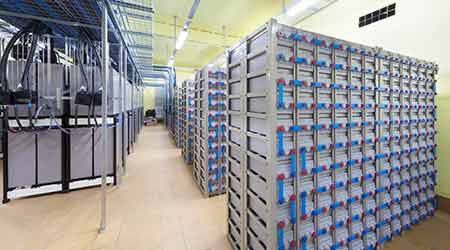Level 4: 2N Systems Feature Full Equipment and System Redundancy
2N provides fully redundant systems to maintain power to the load in the event of failure of any single component of the distribution system.
A 2N system, or “two times the need,” features full equipment and systems redundancy. Typically reserved for data center installations, 2N features two completely independent power distribution systems from the utility to the load. In the example above, going from resilient N+1 to 2N would require separate generator systems to be available.
Pros: 2N provides fully redundant systems to maintain power to the load in the event of failure of any single component of the distribution system. Since there are no shared distribution components, 2N provides concurrent maintainability of all distribution equipment and no single points of failure throughout with the exception of some branch circuit loads that would not have a major impact on business continuity.
Cons: Typically not feasible for tenants utilizing the existing base building distribution system, or those on a tight budget.
There’s a lot to weigh when it comes to stand-by power for today’s businesses — from budget to space considerations, base building infrastructure, and N-tiered reliability levels. Facility managers, end-users, C-suite executives, and IT personnel all must weigh in on the needs of the organization, bringing their own perspectives and demands to the discussion. The result will ultimately determine the organization’s stand-by power system infrastructure.
Related Topics:

















